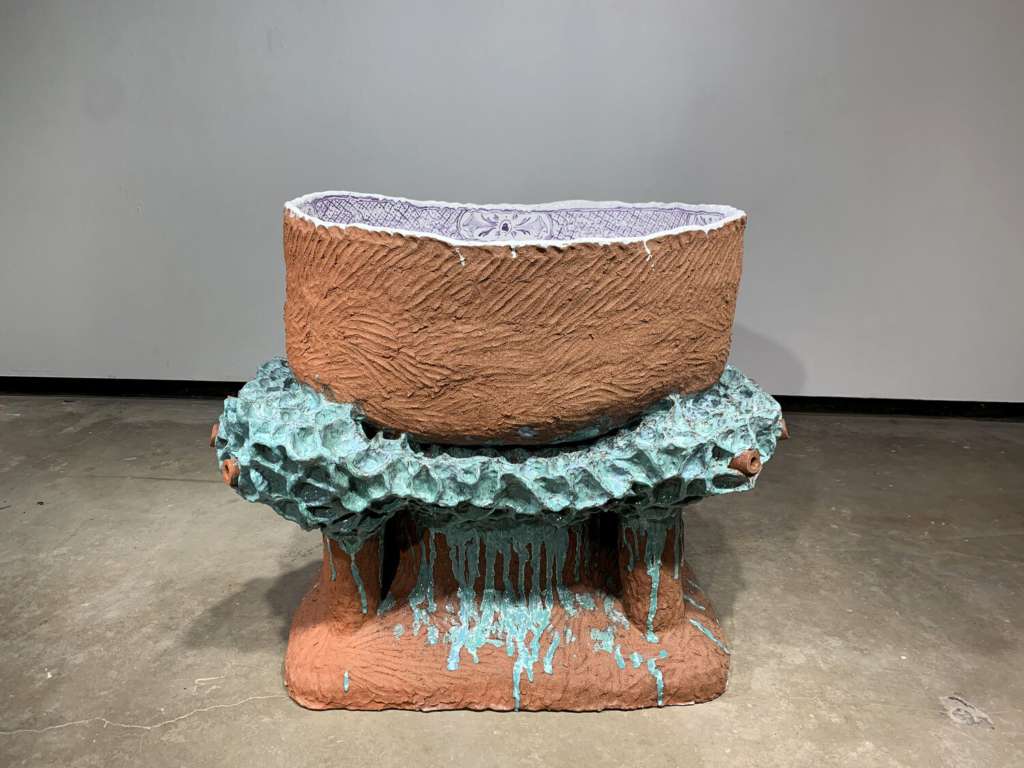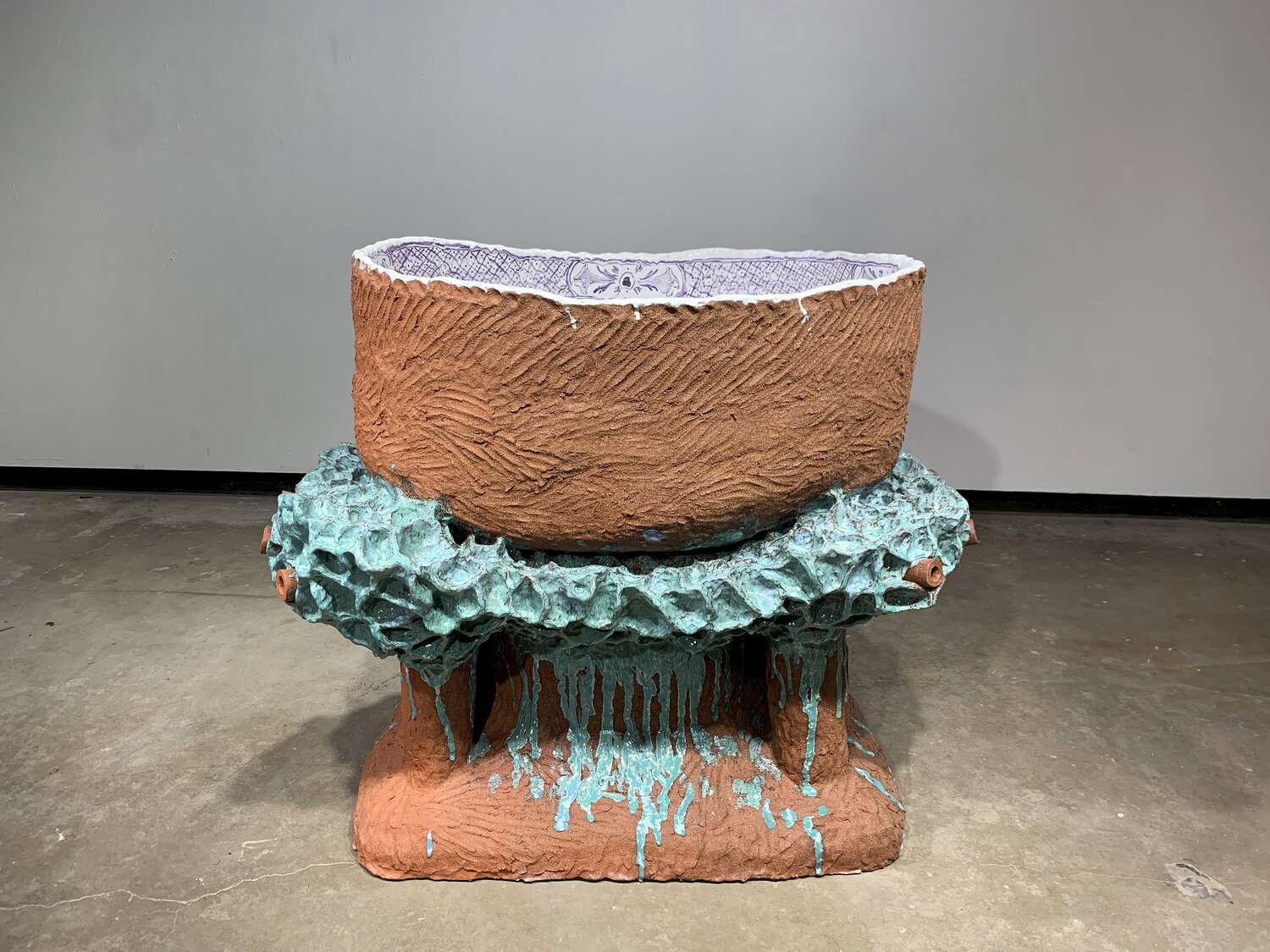The Porous Sea (Tub), glazed earthenware. 48” x 36” x 30”, 2019.
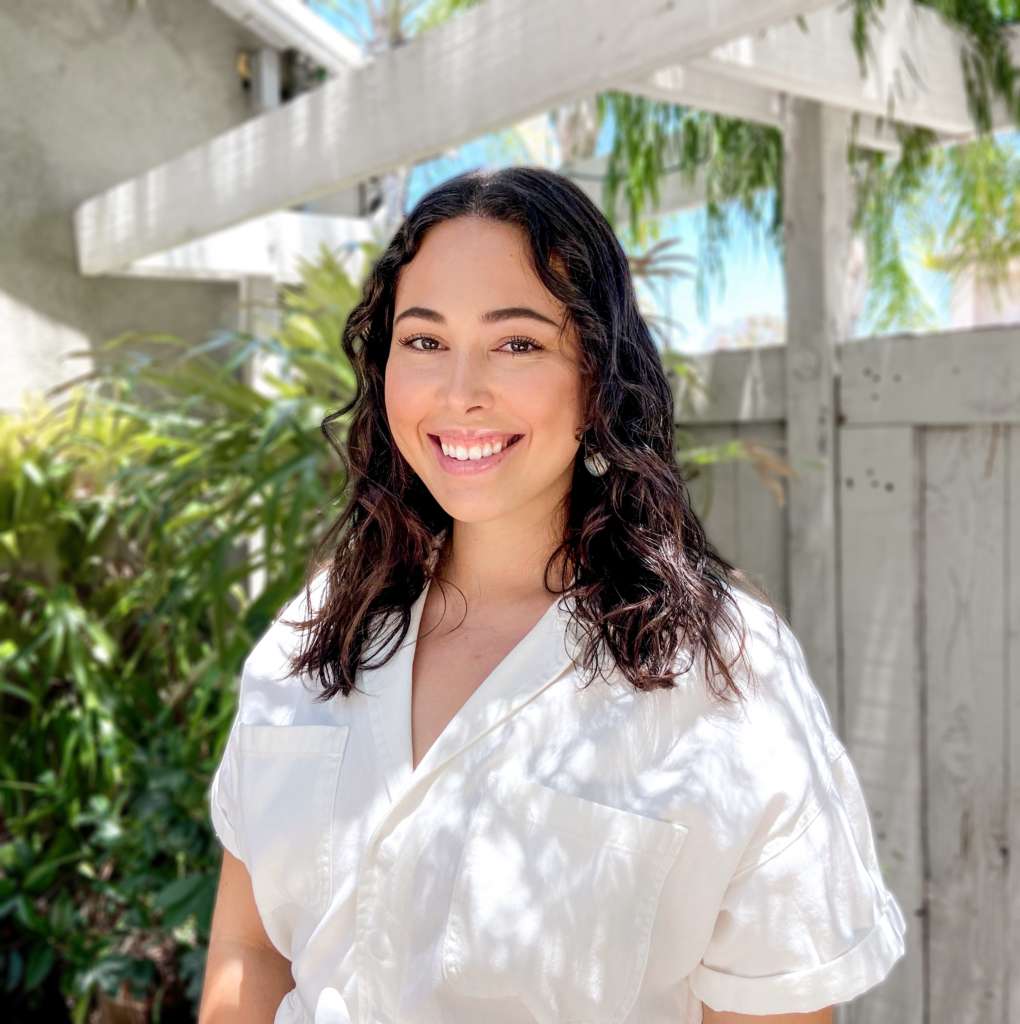
Hi! My name is Alyson, and I’m this year’s Getty Marrow Intern at AMOCA. I recently graduated from Chapman University with a BA in Art History and a minor in Anthropology.
Nicki Green is a transdisciplinary artist primarily working in clay. In 2009, she received a BFA in sculpture from the San Francisco Art Institute, and an MFA in Art Practice from UC Berkeley in 2018, where she is now teaching ceramics.
I began reading about Green’s work after she was included in Craft Contemporary’s 2020 Clay Biennial, and then as an AMOCA curatorial intern researching for future exhibitions. Two of Green’s raised ceramic containers, The Porous Sea (Tank) and The Porous Sea (Tub) were juxtaposed against other early career BIPOC and women artists, such as Raven Halfmoon and Roxanne Jackson. The aura of the collection of works there was incredibly fresh and positive- definitely exciting for the path that the ceramic world has been steadily moving along. Green’s own work, like so many others working in ceramics at the moment, is informed by her varying identities: being a trans woman, and being a Jewish woman.
The Porous Sea (Tank) and The Porous Sea (Tub), both from 2019, follow Green’s fascination with combining clay and identity. In a 2019 interview with Deborah Bishop for American Craft Magazine, Green recalls watching a scene in Sex in the City where a character goes to bathe in the mikveh, a Jewish ritual bath, and realized, “The mikveh is a tiled space. Tile is ceramic. The mikveh is a ceramic object. Oh. My. God!” Green goes on to explain how bathing in the mikveh is akin to undergoing a personal and intimate transformation, much like her experience as a trans woman. Her Porous Sea set is able to embody the symbolic power of the Jewish ritual bath, while being a product of Green’s own transformation of the material. Turquoise blue water spills out from the bottom of the raised tub and tank, appearing as a textured seafoam, or bubbles. The interiors are glazed, rendering them able to hold liquid, but the unglazed exteriors are left bare, and therefore porous, with Green’s finger marks visible from smoothing and molding the clay.
Newer work by Green still retains the idea of a vessel, like the mikveh, as a sacred object. Her Pillar of Earth series, completed this year, features various branded five gallon buckets placed on top of intricately painted pillars being overtaken by a substance similar to that in The Porous Sea series. The buckets are all too familiar to me, having used them in my college ceramic studio for water, glaze, recycled clay, and tool storage. In Green’s works, they are dirty, stained with clay and glaze to show their use, yet are propped up on pedestals as if they are trophies. One of the buckets is from Orchard Supply Hardware, another is green, with “Bubbies Kosher Dill Pickles” (very good pickles) across the front- a hint at Green’s Jewish heritage and culture.
The series title, Pillar of the Earth suggests that these buckets, on these white pedestals painted over with purple stain designs, are quite literally pillars within Green’s personal earth.
Green’s work strives to take her own world and experiences and to truly center them in a way that is unforgiving and full of pride. Green has even gone so far as to obtain bricks from a deconstructed kiln installed by Peter Voulkos at UC Berkeley, and bricks and sand from around the Bay Area to incorporate into her work and clay mixes. By doing this, she is continuously grounding herself in a specific space and place, while forcing a famous, masculine, ceramic artist like Peter Voulkos to be associated with her work, the ceramic work of a Jewish trans woman, in 2020.
Nicki Green currently has a solo show, Between Washing and Unwithering, on view by appointment from Oct. 8 – Nov. 7 at LaiSun Keane LLC in Boston, MA.
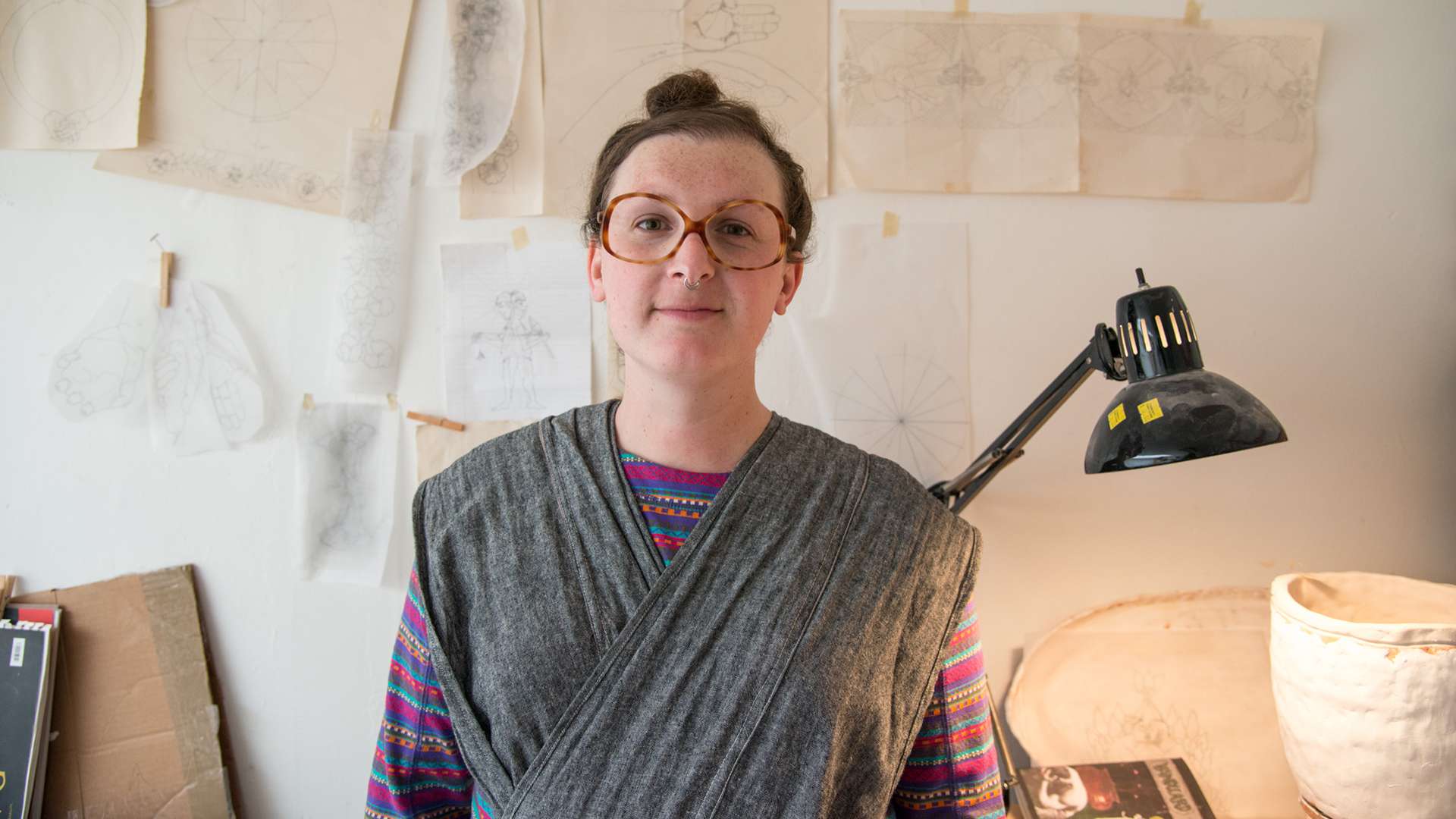
Nicki Green in her studio, Graham Holoch / KQED, 2016. 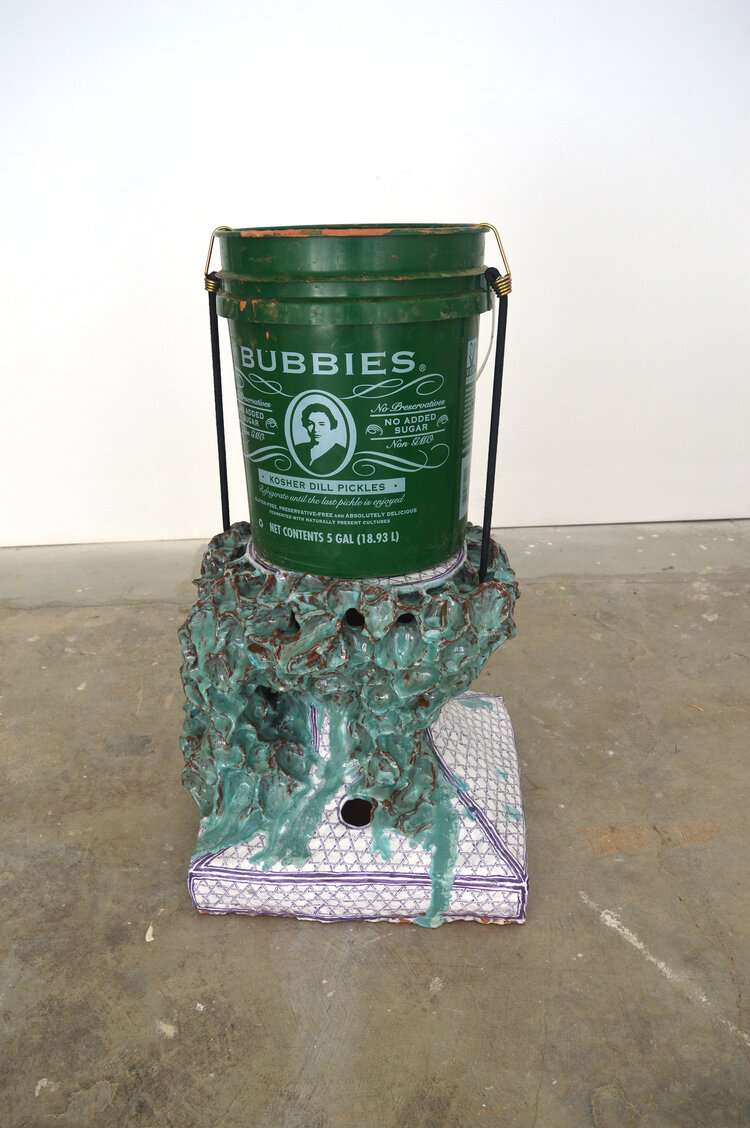
Pillar of Earth 1, glazed earthenware with bungees and bucket, 32” x 18” x 17.5”, 2020. 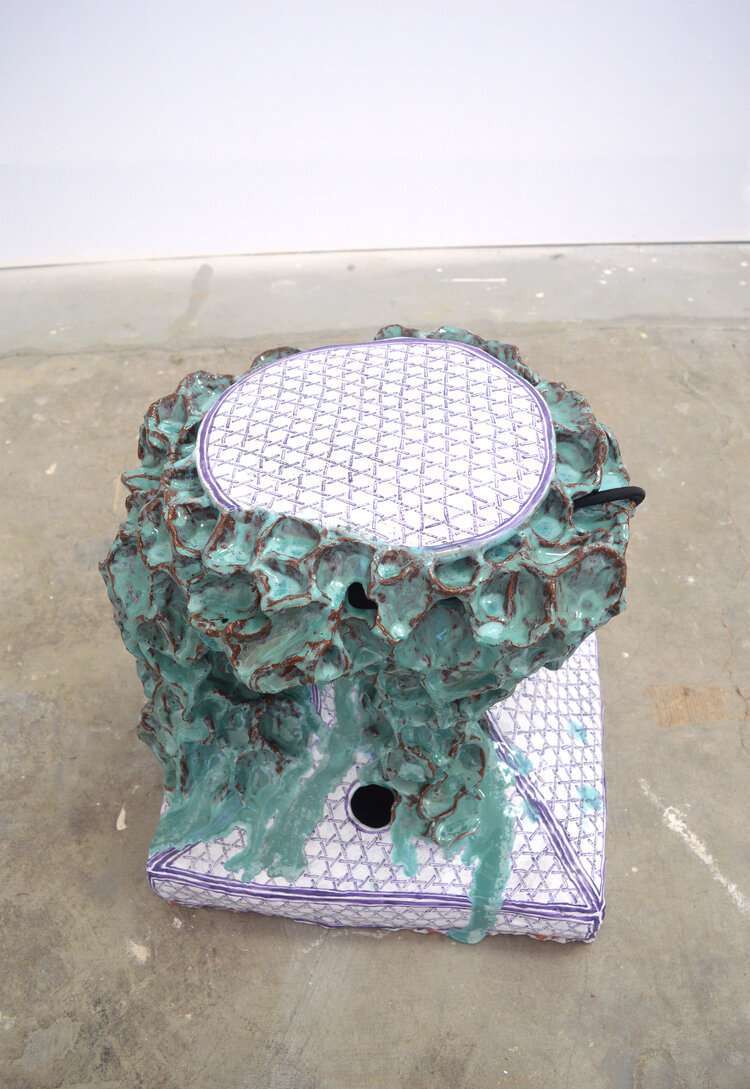
Pillar of Earth 1 (detail), glazed earthenware with bungees and bucket, 32” x 18” x 17.5”, 2020. 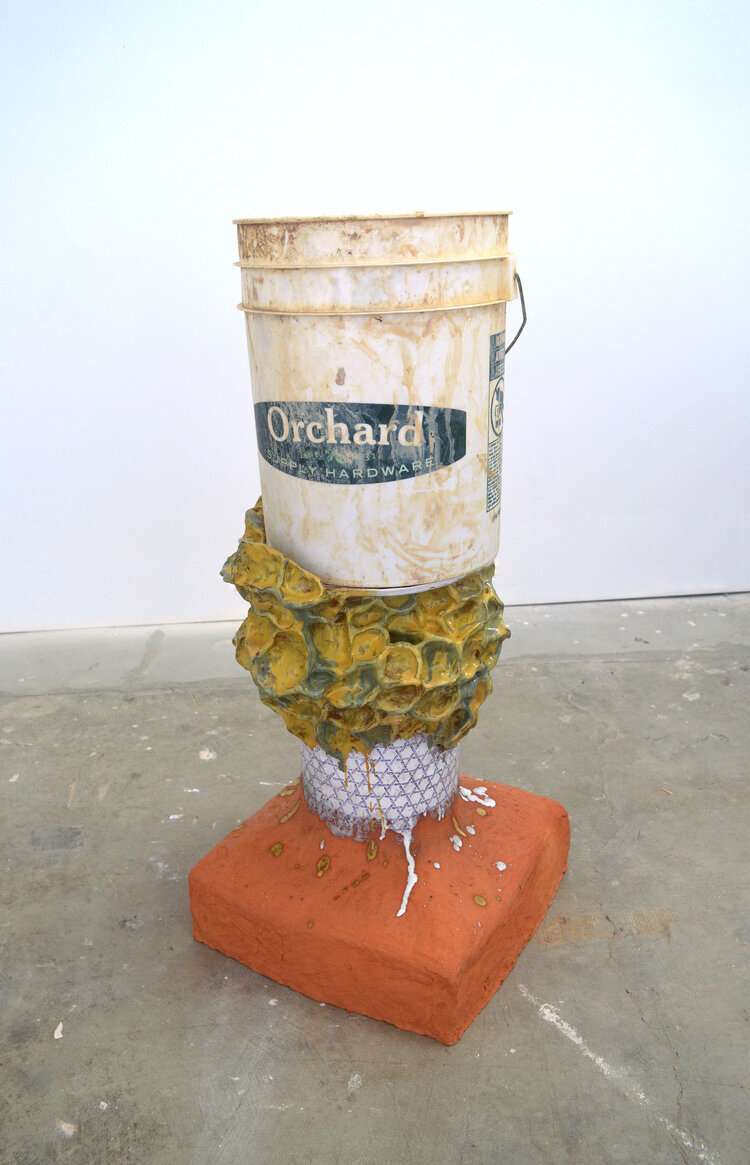
Pillar of Earth 2, glazed earthenware with bucket and bungees, 36” x 15” x 15”, 2020. 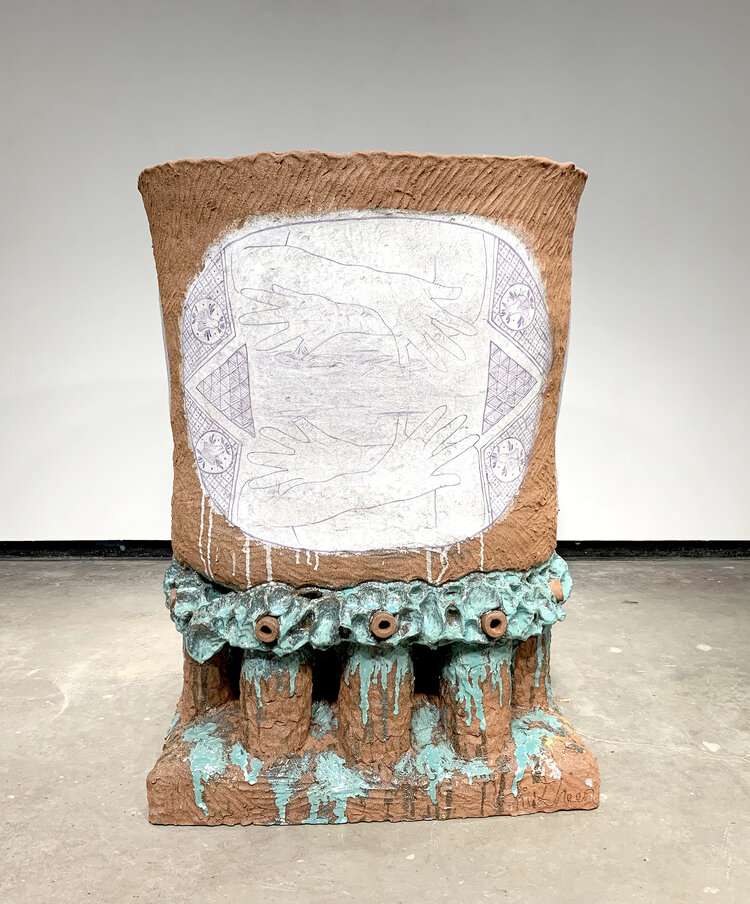
The Porous Sea (Tank), glazed earthenware, 51” x 38” x 29”, 2019. 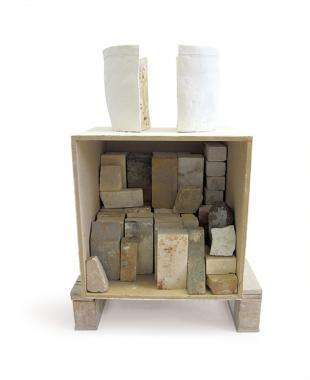
Soft Brick, ceramic and bricks from a Peter Voulkos kiln, 2017. 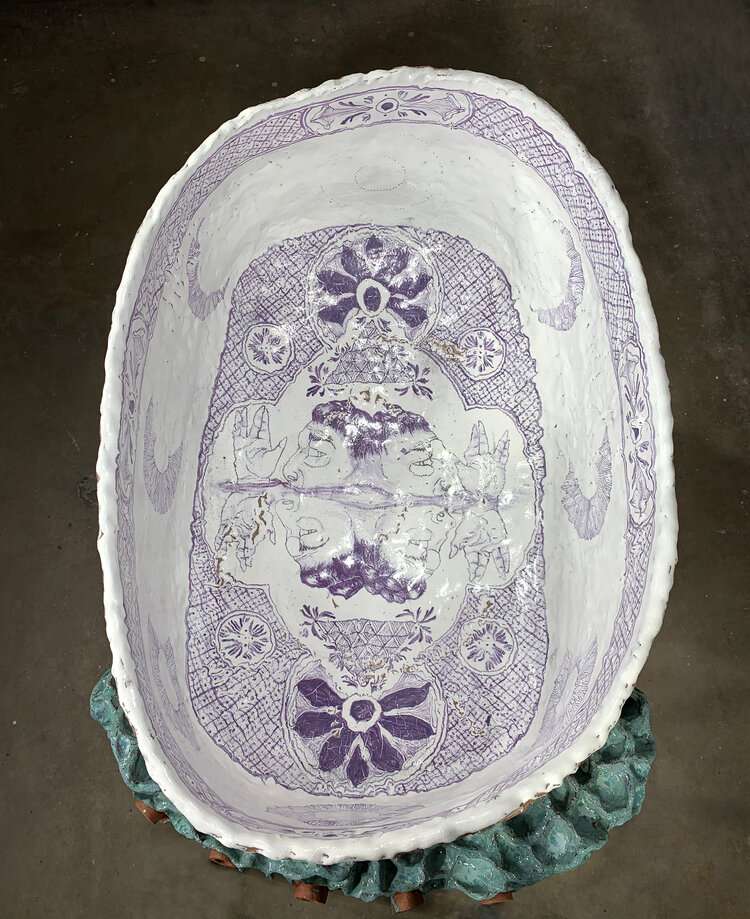
The Porous Sea (Tub) (detail), glazed earthenware. 48” x 36” x 30”, 2019.
Alyson Brandes is a graduate of Chapman University and a 2020 Getty Marrow Undergraduate Intern at AMOCA. During her internship, Brandes writes periodically for AMOCA.org, and posts on Instagram and Facebook on Tuesdays. Read her blog posts:
- Asco and the Hierarchies of Art
- Feminizing Brutalism: Ruby Neri and Her Giant Vessels
- The Cinematic Roots of Clay
- The Colorful World of Miss Anna Valdez
- Split Vessels: Jenny Hata Blumenfield
- The Legend of Beatrice Wood
- Nicole Seisler: Rituals, Processes and Documentation
- Ashwini Bhat
- Nancy Selvin: The Abstraction of Art History
- New Acquisitions: Trompe l’Oeil
- Kim Tucker’s “Primal Beings, Ghosts, and Human Dummies”
- Blue Boys and Farmers: Howard Kottler’s Queer Plates
- At the Center of Nicki Green
- The Legacy of Sascha Brastoff
- End of Internship Reflection
